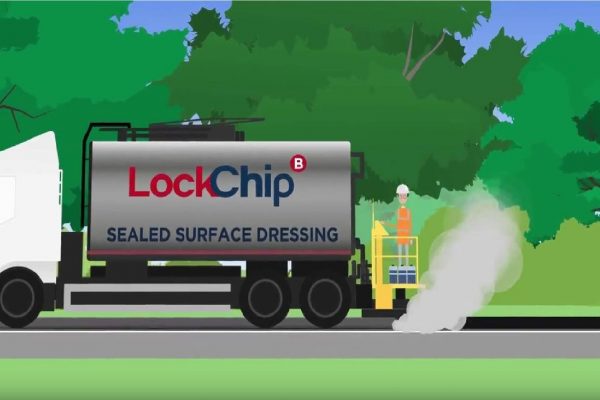Why is there a temporary speed limit after surface dressing?
A surface dressing is created by spraying a bitumen binder onto the road surface, followed by stone chippings. A roller is then used to push the majority of chips into the bitumen and secure them to the new surface. In all cases, following a surface dressing application, there will be some loose chips, however, these will become more embedded into the surface as vehicles drive over them and push them into the binder.
Surface dressing is used to preserve roads and prevent the need for more extensive resurfacing works. It also seals and waterproofs the road, as well as improving grip on the road surface for safer driving.
Surface Dressing & Reduced Speed Limits
Following a surface dressing application, the area is swept regularly to clear it of most loose chips. However, in this interim period, it may be necessary to apply a temporary speed limit to the road to ensure good early-life retention of chips and prevent damage to vehicles.
Driving too fast on a road which has been recently treated with a surface dressing can result in broken windscreens or chipped paintwork, as the friction from the tyres can dislodge loose chips. Dislodging these chips before they get a chance to embed properly within the surface will also reduce the effectiveness of the surface dressing and result in the need for further resurfacing works in the future.
For these reasons, following a surface dressing application a temporary speed limit of 20mph may be put in place. It is important to adhere to these low speeds until all warning signs have been removed.
Locking Down Loose Aggregate With LockChip
To help improve the early life retention of chips in conventional surface dressing, we developed an innovative sealed surface dressing system called LockChip. The LockChip binder is applied following the application of conventional surface dressing after the newly dressed road has received two sweeps.
The major benefit of LockChip is that it cures in just 20 minutes, while significantly improving the early life retention of chips. This means that roads can be reopened quickly following application, minimising disruption to the public. Further to this, the LockChip binder also enhances the appearance of the new surface, provides waterproofing and increases durability, working to prevent defects, cracks, and potholes.
Learn More About LockChip
LockChip is now used across the UK as part of surface treatment programmes carried out by local councils. LockChip is favoured as a surface dressing solution at sites where road users will appreciate the immediate benefits of the process, such as the quick curing time and the aesthetically pleasing appearance of the solution.
For more information about LockChip surface dressing, please contact us today and speak to a member of our team. We have a range of resources and information available regarding all of our highway preservation, asphalt bonding, asphalt sealing, and pothole repair products and we would be happy to support you in discovering the best BituChem highway solutions for you.





